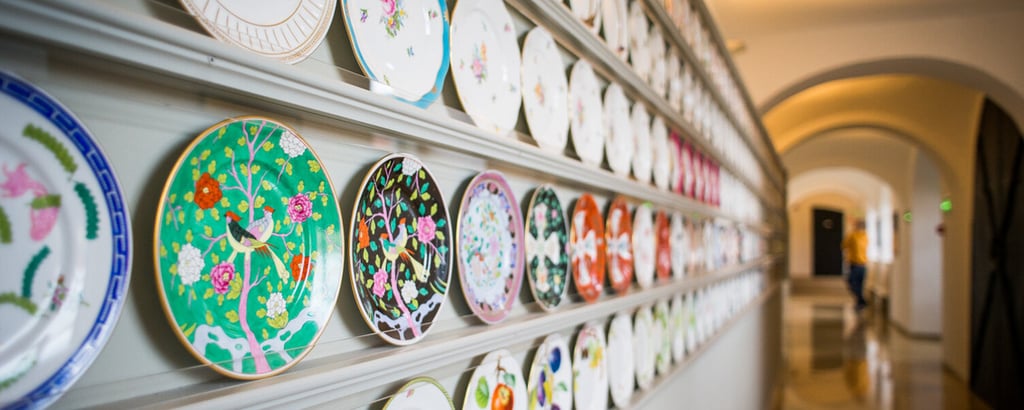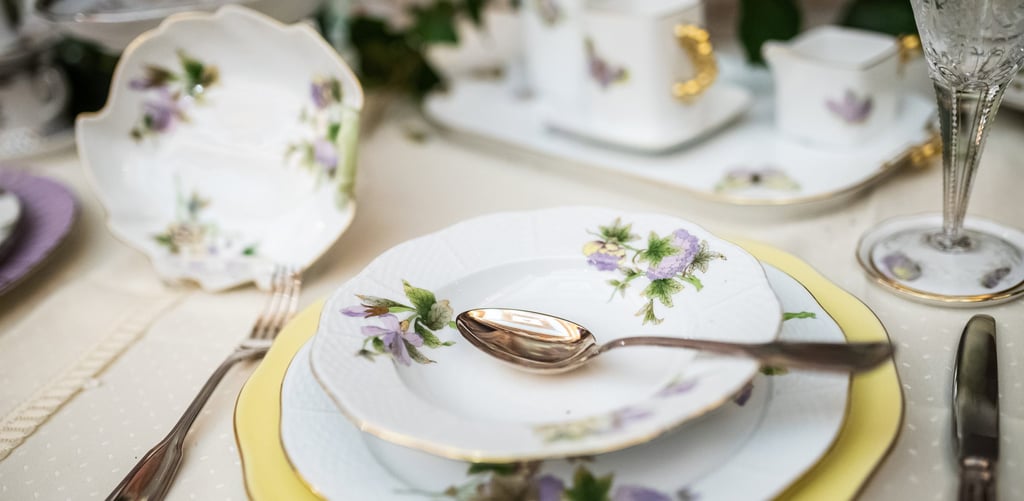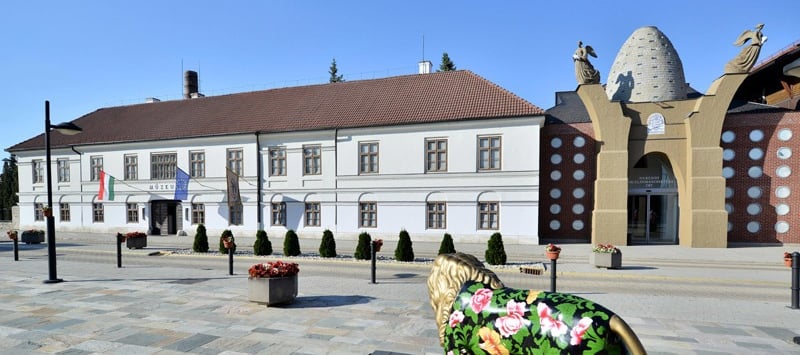Herend Porcelain Museum: Where Clay Becomes Poetry
Discover the timeless elegance of Hungary's porcelain legacy, where every piece tells a story of artistry and tradition.


A Kingdom of Porcelain Hidden in the Hills
Travel westward from Budapest, past the swelling plains and undulating vineyards of Transdanubia, and you will reach a town not unlike any other—modest in size, quiet in demeanor. But Herend, nestled gently at the foot of the Bakony Hills, is no ordinary settlement. It is a sanctuary of porcelain, a place where earth and water meet fire and spirit, and where everyday clay is transformed into timeless beauty.
The Herend Porcelain Museum, an elegant enclave next to the legendary manufactory, is more than a museum. It is a temple of craftsmanship, a gallery of glinting dreams made solid. For over two centuries, Herend has created pieces not just for tables but for thrones, for emperors and empresses, for sultans and collectors, for those who believe in the silent poetry of porcelain.
The Birth of a Legend: From Clay to Court
The story begins in 1826, with a pottery workshop opened by Vince Stingl. But it was Mór Fischer de Farkasházy who, in 1839, transformed Herend into a porcelain manufactory that would become world-famous. His vision was clear: to create hand-painted, artistic porcelain that could rival the finest works of Meissen and Sèvres.
It wasn’t long before royalty came calling. In 1851, at the Great Exhibition in London, Herend displayed pieces so delicate, so dazzling, that Queen Victoria herself ordered a custom dinner set—lavishly decorated with butterflies and peonies. That pattern still bears her name today and remains one of Herend’s most cherished and iconic designs.
From there, the Herend name swept across Europe’s noble courts. Habsburgs, Rothschilds, tsars, and shahs began commissioning their own patterns, their own symbols, their own eternal tableware. And behind it all—every curve, every motif—were the hands of Hungarian artists, generations trained in an unbroken lineage of tradition.
The Museum: Where Porcelain Speaks in Silence
Located in a gracious classical building adjoining the Herend Porcelanium Visitor Centre, the Herend Porcelain Museum is not just a collection—it is a story told in clay and glaze. Its rooms glow with natural light and polished floors, letting the porcelain shine without distraction. Every step brings you closer to a world where time slows and the eye dances.
The museum is curated chronologically and thematically, guiding visitors through the evolution of Herend’s artistry.
You begin with early designs—simpler, more restrained, evoking neoclassical elegance. Then you enter the golden age, where Herend’s signature styles bloom: ornate Rococo flourishes, lush chinoiserie scenes, dreamy baroque figurines. Some pieces are as small as a walnut—others tower above the eye, massive urns painted with myth and legend.
Then come the pattern rooms: a kaleidoscope of porcelain tableware featuring the now-legendary motifs:
Queen Victoria: light, lyrical butterflies and flowers on a pure white base
Rothschild: birds perched delicately among leafy branches, inspired by a family tale
Apponyi: floral splendor reduced to a singular, symmetrical bouquet in radiant hues
Indian Basket, Chinese Bouquet, and more—each pattern not just decoration, but storytelling in color and shape
You pass glass cases of hand-painted figurines, many portraying Hungarian folk life, animals, saints, or scenes from Greek mythology. A nobleman in powdered wig. A shepherd with a lamb. A ballerina in mid-spin. Each is carved, molded, fired, and painted by hand—sometimes requiring up to 15 artisans for a single figure.
One of the museum’s crown jewels is its collection of custom-made and royal-commissioned pieces: tea sets for the tsars, exotic vases for Persian monarchs, gifts given to emperors, presidents, and popes. These are more than utilitarian objects. They are porcelain epics.
The Minimanufactory: Watching Magic Take Form
Adjacent to the museum is the Minimanufactory, and this is where the soul of Herend is revealed. For here, you witness not finished masterpieces, but the alchemy of creation—each stage performed live before your eyes.
The process begins with liquid porcelain slip, poured into plaster molds that absorb water and leave a hardened form. From there, the piece is shaped, refined, and kiln-fired at over 1,400°C, its impurities burned away, its form solidified into permanence.
Then comes the painting—a ritual of patience and precision. Artists mix pigments by hand, using ancient recipes. They apply color with the thinnest of brushes, some hairs only a few millimeters wide. You watch as a blue iris is born petal by petal, or a butterfly’s wing filled with the tiniest filigree.
Gold leaf is burnished onto handles and rims, and the final glaze coats the piece in a liquid mirror. Another firing seals it. When it cools, it emerges: an object of function, yes, but also of spirit. Of time. Of soul.
You realize that every Herend object is a collaboration across centuries—from Fischer to the present-day painter, from the earth’s clay to the mind’s eye.
Herend’s Artistic Philosophy
In Herend, tradition and innovation do not clash—they entwine. Though many patterns date back 150 years, new ones are created constantly. Some pay homage to Japanese and Persian art. Others speak in the minimalist visual language of today. Still others reinterpret the old patterns with new colors, textures, or forms.
There is also Herend’s unique place in Hungary’s identity. More than a brand, it is a national symbol—of endurance, elegance, and handmade excellence. In 2014, Herend Porcelain was officially recognized as a Hungarikum, placing it among the most distinguished treasures of Hungarian culture.
Herend is also a kind of resistance: in a world of mass production, of disposable design, it remains fiercely handmade. Every piece carries the initials of its painter. Every brushstroke is unrepeatable.


Interactive Exhibits and Educational Programs
The Herend Porcelain Museum is not just a place to admire objects behind glass—it is an active center of learning and cultural engagement. The museum offers workshops, guided tours, masterclasses, and lectures for all age groups. Children can try their hand at painting mock-up plates, while adults can dive deep into the secrets of glaze chemistry or the hidden meanings behind recurring motifs.
Special programs are often held for:
Art and design students, who study the tension between form and function
Historians, who trace the shifts in taste, trade, and cultural influence
Collectors, who gather for curated exhibitions or new pattern unveilings
These offerings are not passive learning. They are invitations into the Herend world—a world where even the tiniest porcelain rose contains stories, choices, and traditions shaped by human hands.
The museum also rotates temporary exhibitions, often celebrating Hungarian visual arts, international porcelain, or collaborations with contemporary designers. In every case, the focus remains: to honor craft, cultivate beauty, and preserve legacy.
The Porcelanium Experience
The Herend Porcelain Museum is part of a larger complex known as the Herend Porcelanium—an experience center that includes the museum, the minimanufactory, the Apicius Restaurant and Café, and the Porcelain Shop.
At the Porcelain Shop, visitors can purchase a wide array of Herend items—ranging from individual teacups to full-service dinner sets, animal figurines, centerpieces, and collector’s series. The shop is a marvel in itself, filled with gleaming shelves and walls of artistry.
The Apicius Café offers gourmet meals and pastries served, of course, on Herend porcelain. Here, the visitor doesn’t merely look at the porcelain—they dine with it, as royalty once did.
All of this is wrapped in the same sense of quiet dignity that marks the brand. Nothing is flashy. Everything is graceful.


Visiting Information
Location
Herend Porcelain Museum
Kossuth Lajos u. 140
8440 Herend, Hungary
Located approximately 15 km from Lake Balaton and easily reachable by car, train (from Veszprém), or organized day trips from Budapest.
Opening Hours
March to October:
Monday to Sunday, 9:00 AM – 5:00 PMNovember to February:
Tuesday to Saturday, 9:00 AM – 4:00 PM
Check the website before visiting as hours may change during holidays and special events.
Ticket Prices
Museum + Minimanufactory Tour
Adults: 2,500 HUF ($7.00)$4.20)
Students/Seniors: 1,500 HUF (
Children under 6: Free
Family (2 adults + 2 children): 6,000 HUF (~$17.00)Workshop Add-ons or Special Tours: additional fees apply, often ranging from 500–2,000 HUF per person
Accessibility
The museum is wheelchair-accessible, with ramps and elevators available. Guides are available in multiple languages (Hungarian, English, German, and French). Printed brochures and QR-code guided tours allow for an interactive experience.
How to Get There
By car: Around 1.5 hours from Budapest via M7 and Route 8
By train: Regular service from Budapest Déli Station to Veszprém, then short bus or taxi ride to Herend
Tour groups: Many Balaton-region tours include Herend as a featured stop
Official Website and Social Media
Facebook: https://www.facebook.com/HerendPorcelain
Instagram: https://www.instagram.com/herendporcelain








